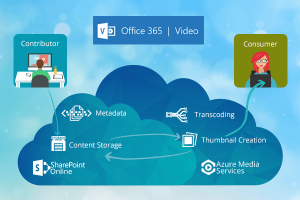The world is going through a tough time with the outbreak of the novel Coronavirus, which has affected daily business operations in several ways. The outbreak has potentially harmed the economy of various countries and caused organizations to fail from performing fundamentally.
To battle with the current scenario of the pandemic, organizations around the world are figuring out ways for business continuity using technologies that encourage remote work. Your business cannot stop its operations and wait for the pandemic to get over, rather with the help of technology advancements you can empower your organization to remotely collaborate and work to keep up business continuity.
In such a difficult time, the use of innovative technologies can keep your business in operation and ensure that your employees stay safe and productive. Through this blog post, we aim to share with you some key technology tools that can assist you in overcoming this situation.
Challenges faced in the current pandemic situation
Businesses in every industry have been affected. However, business continuity should be your priority by simultaneously dealing within the current pandemic situation. Here are some of the identified challenges that you may be facing currently:
- Practicing the health safety recommendations provided by the World Health Organization (WHO)
- Testing the availability of infrastructure and other services for remote collaboration
- Prioritizing access to corporate systems (Management, operations, HR, etc.)
- Analyzing the key roles that require on-site access and planning a backup plan during the case of their absence
- Mapping the signs of major failures within the organization (processes, personnel, technologies) and drawing up countermeasures
- Establishing emergency measures and organizational instructions to ensure operational continuity
- Setting up reaction plans such as procedures, allocation of employees, tools and other resources
- Preparing scenarios, plans and measures to restore business operations (disaster recovery plans)
Understanding why it is crucial to act now
As the COVID-19 virus has proven to be rapidly spreading, it is difficult to deal with the actions that must be taken for agility. Therefore, it is critical to undertake actions that align with your organization’s business continuity planning. We recommend you to take this time to re-evaluate your operations and respond rapidly to maintain your business continuity by eliminating any menace of business operations now and in the future. Focus on the potential risks that may pose uncertainty to your business model components and develop tentative strategies to deal with them in the next stage.
Though it may be challenging to prepare your organization for big development solutions at this hour, you can consider using the following technology tools.
Key technologies and tools that can ensure seamless business continuity while your teams are working from home
1. Cloud computing
If your organization has never thought of adopting cloud solutions, this may be the time to embrace it. Cloud collaboration provides you with the safety and ability to allow your employees to work remotely. It offers organizations with amazing benefits such as not requiring to spend on building infrastructure to get started, making it cost-effective. Secondly, cloud solutions are scalable, so you can easily add or remove services as and when required. And most importantly, your employees will have easy access to cloud files for convenient and collaborative file sharing. Remote employees enjoy working on the cloud because it provides them with seamless and secure experience. Moreover, they can sign-in from anywhere using any device. Interestingly, organizations that operate through the cloud are feeling safer during this pandemic.
2. Business apps
Once you move to the cloud, you can gain access to endless opportunities for your business. You will gain the ability to improve your operational collaboration by building business applications, for instance, managing a project or internal communications. These functionalities will enable your remote employees with similar accessibility to your on-site employees. Although incorporating these business applications into operations can require pre-planning and thoughtfulness, such incentives are worth it.
3. Mobile tools
Your employees might be anywhere right now and they must be heavily dependent on their mobile devices for communication. Therefore, building a mobile workflow strategy can appear to be practical and productive. Also, it offers more flexibility and helps to gain better process efficiency.
You can deploy mobile-based applications for your employees and make it easier for them to access their on-site systems. Furthermore, you can also provide your employees with a portable Wi-Fi so they can have a stable connection regardless of where they are.
4. Unified communications
Unified communication is one such powerful tool that allows you to integrate your communication channels to simplify access. The ability to enhance collaboration, capacity to improve communication options, significantly help to increase productivity. These are some of the potential benefits of virtual communication tools. The most desirable part is that you can make all this happen in real-time, helping you to improve usability and productivity factors as well. You should use platforms like Google Suite, Slack and Skype to communicate and collaborate on live ideas.
5. Project management tools
If your workforces are working from different locations, project management tools allow them to interact and collaborate synchronously and dynamically to get their work done. General resources like Asana and Monday and other tools that are unique to various business fields such as GitHub and Jira for software development projects are some powerful tools for project management. No matter what sort of remote team you are working with, there is a project management app for you.
6. Video conferencing
When it comes to conducting meetings with remote employees, video is a must. Also, most of them cannot attend in-person meetings and therefore video-conferencing becomes an essential tool for remote collaboration. Smart video-conferencing camera tools such as Skype, Meeting Owl Pro, allow remote workers to feel as if they are in the same meeting room with their colleagues.
Final thoughts
The technological tools we just discussed are imperative to battle the current crisis and may end up becoming the norm in the not so distant future. And running smooth business operations is the need of the hour. Your call to action today can determine your organization’s success tomorrow. We are confident that you can thrive through the pandemic crisis while improving your business efficiency by adopting the above-mentioned technologies to keep your business running and productive all the time. If you need a consultation on how to implement a remote collaboration solution for your business, get in touch with our experts.









